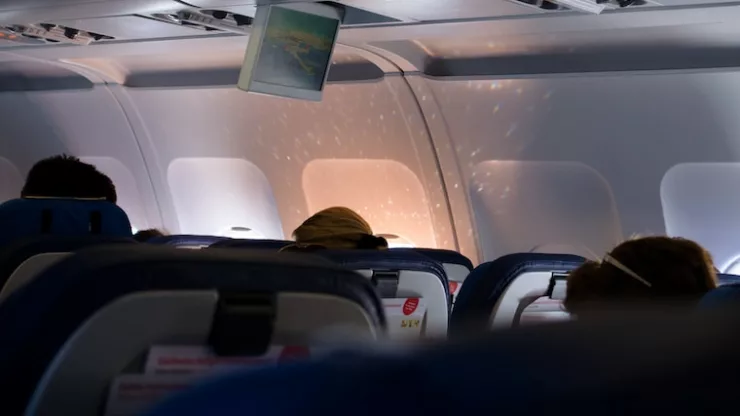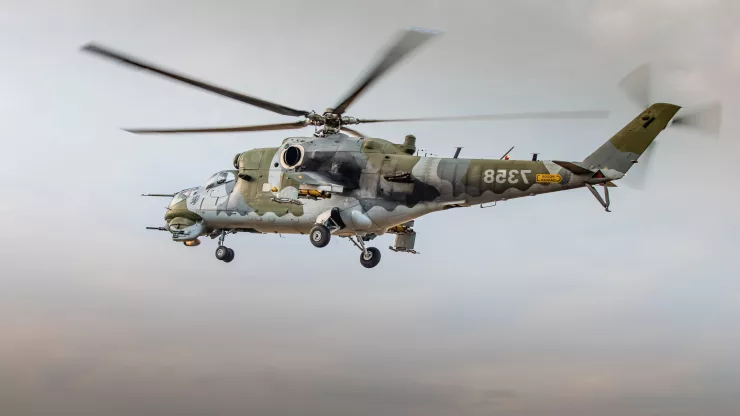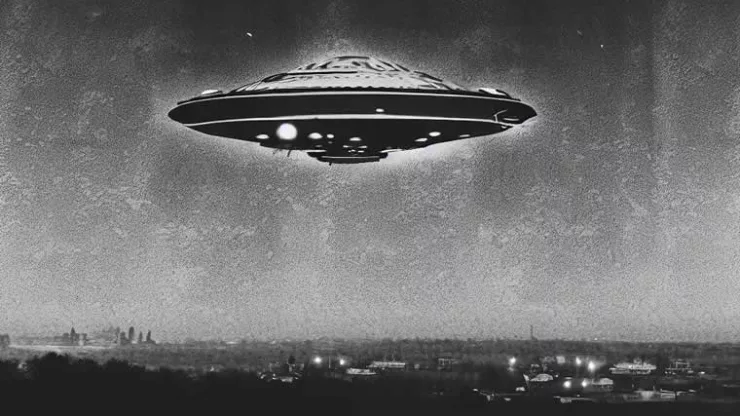On November 17, 1986, Japan Airlines Flight 1628 was on a routine trip from Paris to Tokyo when the crew witnessed an extraordinary UFO sighting.
The incident has since become one of the most famous and intriguing close encounters in UFO history.
Despite official skepticism and debunking attempts, the JAL Flight 1628 incident remains a compelling mystery that raises important questions about our place in the universe.
Jump to Section
The Encounter: A Close Encounter of the Third Kind
The JAL Flight 1628 crew consisted of Captain Kenju Terauchi, co-pilot Takanori Tamefuji, and flight engineer Yoshio Tsukuba. As they crossed Alaska, they saw three unidentified flying objects that they initially thought were military aircraft.
However, the objects soon began to display impossible maneuvers, such as rapid acceleration, deceleration, and sharp turns. They also appeared to be larger than any known aircraft and emitted bright lights.
The objects then positioned themselves around the plane and followed it for more than 50 minutes, sometimes coming within a few hundred feet.
The crew reported feeling threatened and requested permission to take evasive action, but air traffic control was unable to detect anything on radar.
Finally, the objects disappeared without a trace, leaving the crew shaken and confused.
Eyewitness Accounts: What the Pilots Saw
The JAL Flight 1628 crew gave detailed testimonies of their UFO encounter, which were later corroborated by witnesses on the ground and radar data.
Captain Terauchi described the objects as “glowing with a metallic shine” and “twice the size of an aircraft carrier.” He also noted that they emitted a “heat wave” that he could feel on his face.
Co-pilot Tamefuji reported that one of the objects had a shape resembling a “spaceship” and that he could see “windows” and “figures” inside.
Flight engineer Tsukuba confirmed the size and speed of the objects and added that they “seemed to be playing” with the plane.
The crew’s detailed and consistent accounts suggest that they witnessed a real and extraordinary event.
Radar Data: Corroborating the UFO Sighting
The JAL Flight 1628 incident is one of the few UFO sightings that have been corroborated by radar data.
The Federal Aviation Administration (FAA) and the North American Aerospace Defense Command (NORAD) confirmed that their radar systems detected unexplained blips in the same area and time as the incident.
The blips moved in patterns that matched the crew’s descriptions and disappeared at the same time as the objects.
Furthermore, an FAA technician who spoke to the crew during the incident confirmed that he heard their descriptions and saw blips on his radar.
The radar data adds credibility to the crew’s accounts and suggests that the objects were real, physical, and not easily explainable by conventional means.
Investigation: Official Reports and Findings
The JAL Flight 1628 incident was extensively investigated by the FAA, NORAD, the National Transportation Safety Board (NTSB), and the Japanese government.
The agencies interviewed the crew, conducted radar analyses, and examined the plane for possible damage or equipment failures.
They also reviewed the flight recorder tapes and transcripts, which showed that the crew’s descriptions were consistent and coherent.
However, the official reports and findings were inconclusive and often vague.
The FAA and NORAD attributed the blips on their radar to “anomalous propagation,” a term that refers to false signals caused by atmospheric conditions.
The NTSB closed its investigation without issuing a final report or conclusion. The Japanese government expressed interest in the incident but did not conduct its own investigation.
Debunking Attempts: Flawed Explanations
The JAL Flight 1628 incident has been subjected to various debunking attempts, most of which rely on flawed explanations and assumptions.
For example, some skeptics have suggested that the crew mistook planets or stars for UFOs, despite the objects’ size, shape, and movements.
Others have argued that the crew suffered from hallucinations or illusions caused by stress or fatigue, despite the crew’s professionalism and consistency.
Another popular explanation is that the UFOs were secret military aircraft or experimental weapons, despite the lack of evidence and the unlikelihood of such advanced technology being kept secret for decades.
None of these explanations can fully account for the crew’s observations, the radar data, and the absence of any plausible conventional explanation.
The Impact: Media Coverage and Public Interest
The JAL Flight 1628 incident received widespread media coverage and sparked public interest in UFOs and extraterrestrial life.
The incident was reported by major news outlets, such as CNN, ABC, and BBC, and was featured in documentaries and books.
The crew also gave interviews and lectures, which further popularized the incident and made it a cultural icon.
The incident also inspired other UFO sightings and encounters, as well as scientific and philosophical debates about the possibility and implications of intelligent life beyond Earth.
The JAL Flight 1628 incident demonstrated that UFOs are not merely a fringe or fantasy topic but a real and fascinating phenomenon that deserves serious attention and investigation.
The Legacy: Inspiring UFO Research and Belief
The JAL Flight 1628 incident has had a lasting legacy on UFO research and belief.
The incident has been cited as one of the most credible and compelling UFO sightings in history, and has been used as evidence for the existence of extraterrestrial life and the government cover-up of UFO evidence.
The incident has also been invoked by skeptics and debunkers as an example of how eyewitness testimony and media hype can distort reality.
Regardless of one’s position on the incident, the JAL Flight 1628 has become a cultural touchstone for UFO enthusiasts and researchers, and has contributed to the ongoing search for answers about our place in the universe.
The incident has also highlighted the need for more rigorous and objective investigation of UFO sightings and encounters, and the importance of keeping an open mind and avoiding premature judgments.
Conclusion: The JAL Flight 1628 Incident in Perspective
The JAL Flight 1628 incident is a fascinating and intriguing UFO encounter that challenges our understanding of reality and our place in the universe. The incident has been extensively investigated and debated, yet remains unresolved and unexplained.
The incident raises important questions about the nature of UFOs, the reliability of eyewitness testimony, and the limits of scientific explanation.
The incident also highlights the cultural and psychological significance of UFO sightings and encounters, and the role that such phenomena play in our collective imagination and curiosity.
The incident invites us to explore the mysteries of the universe and to appreciate the wonder and complexity of the world around us.
The Question: Are We Alone in the Universe?
The JAL Flight 1628 incident is not just a story of a UFO sighting, but a story of human curiosity and imagination.
The incident reminds us that we are part of a vast and mysterious universe, full of wonders and mysteries that we are only beginning to understand.
The incident challenges us to keep an open mind and to embrace the possibility of the unknown.
The incident also raises the ultimate question: Are we alone in the universe? The answer may be elusive and complex, but the search for the answer is what makes us human.
Whether we find the answer or not, the journey is what matters, and the JAL Flight 1628 incident is just one stop along the way.
Greetings fellow space travelers, I am Draco Blaze, creator of Alienated Media who is passionate about exploring the unknown and writing about my experiences with extraterrestrial life.
My focus is on alien encounters and creating thought-provoking sci-fi short stories that transport readers to new worlds and realities.
Feel free to contact me at [email protected].





